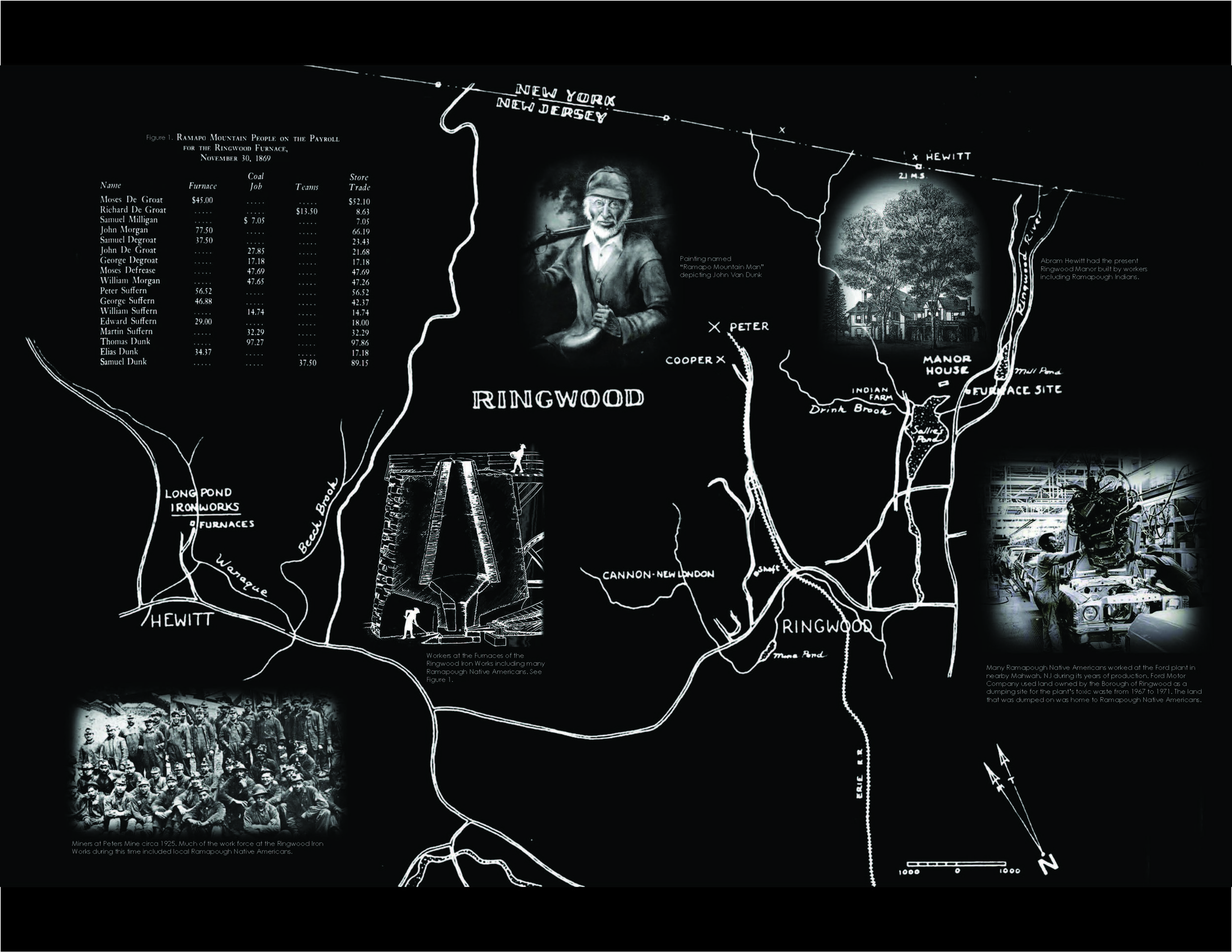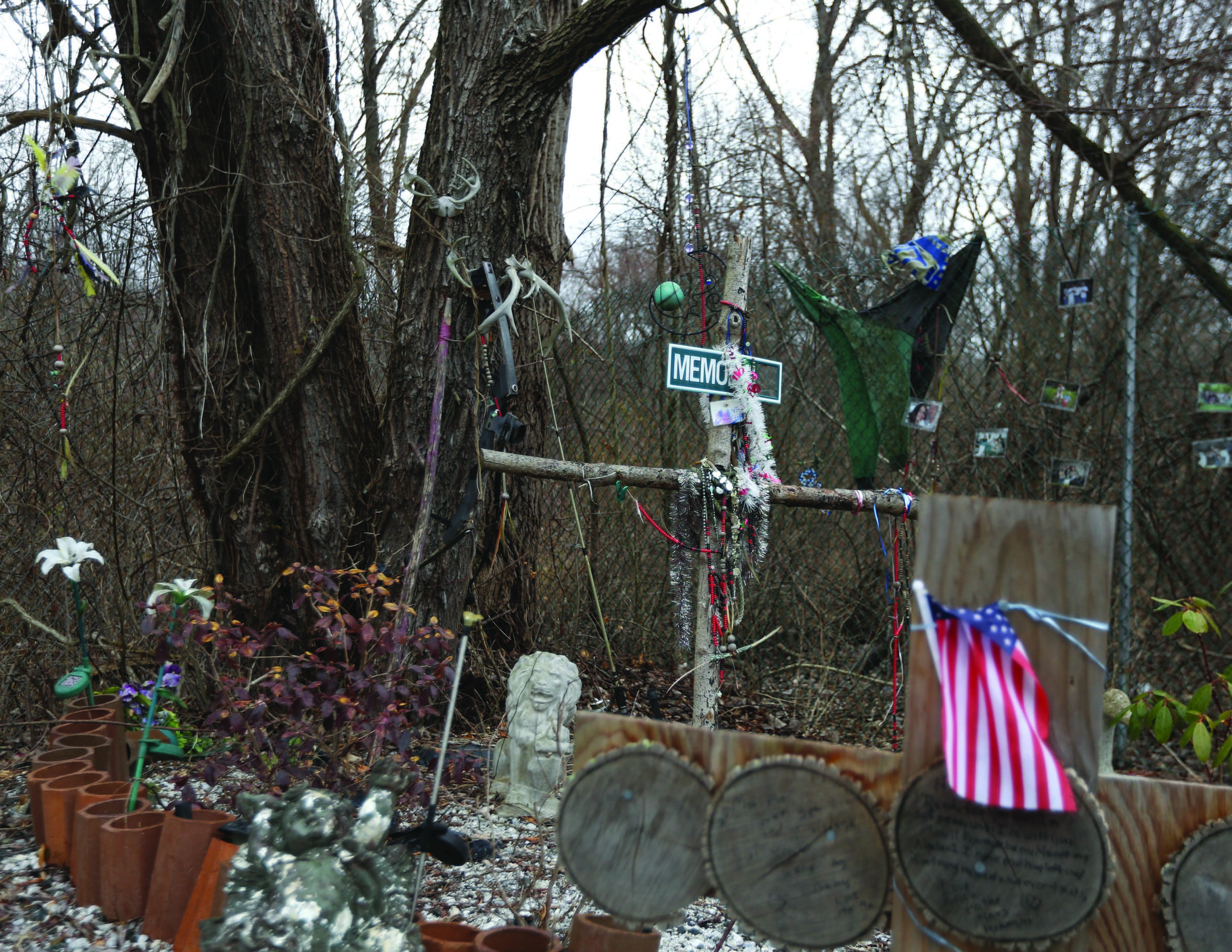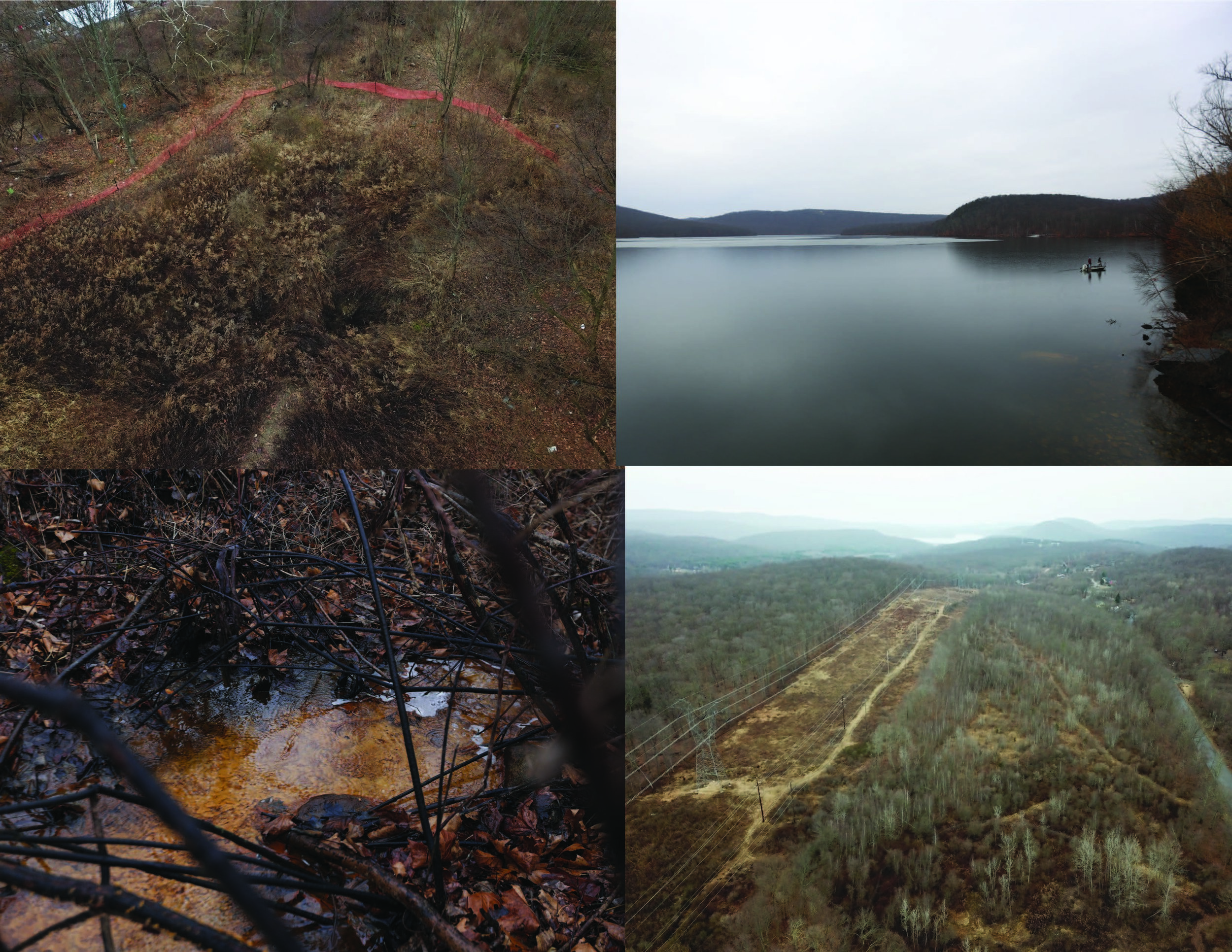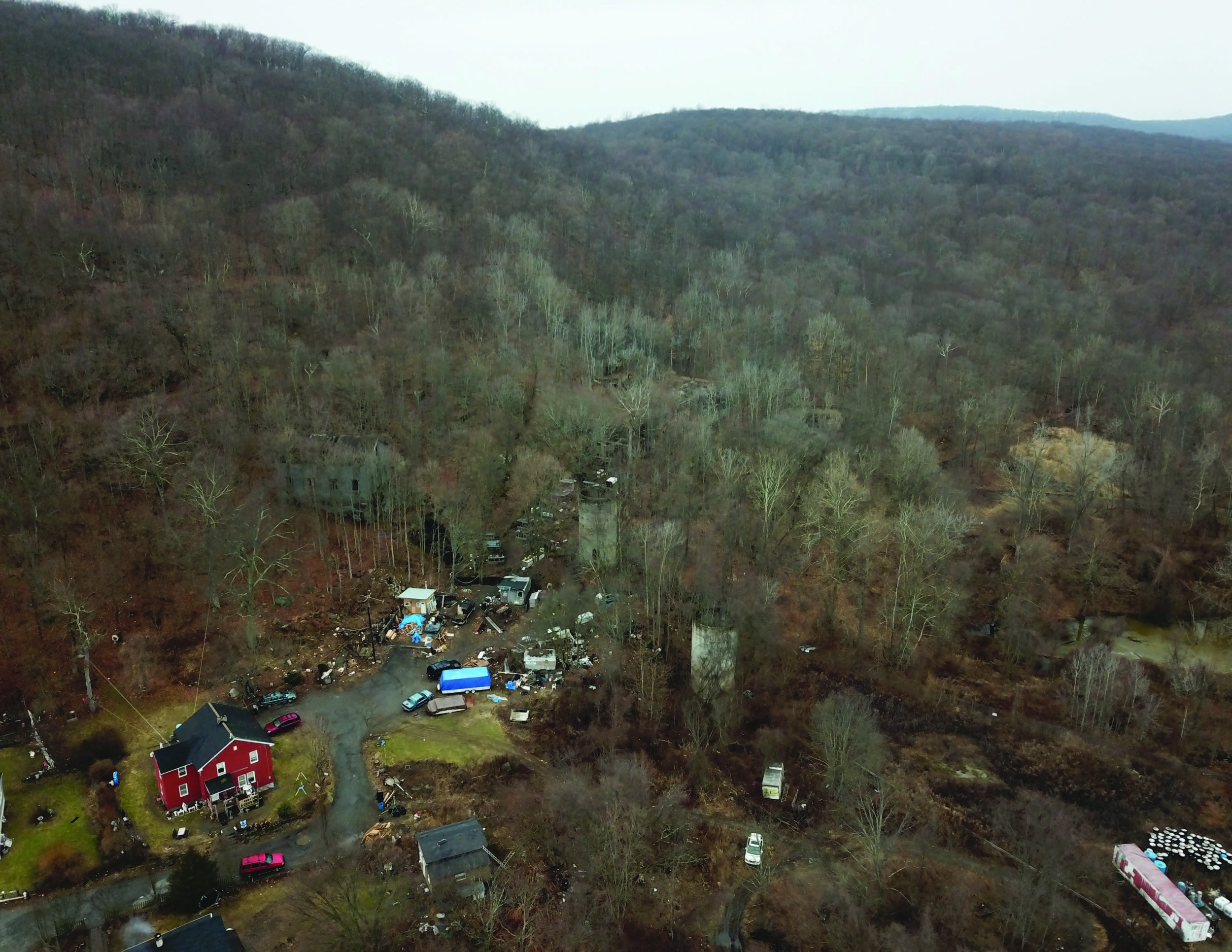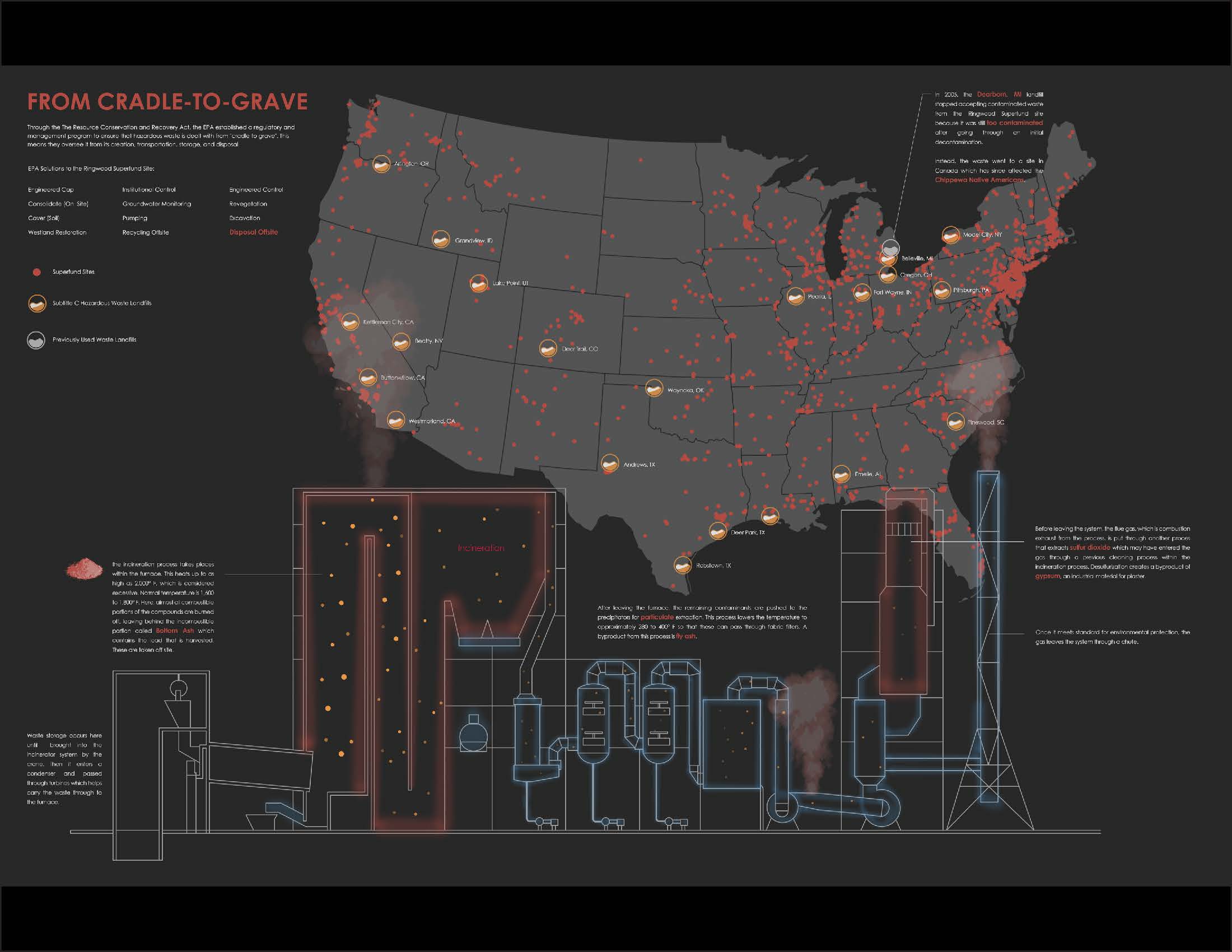This past semester, my design studio worked on documenting and commemorating environmental memories and histories at the Ringwood Mines Superfund Site in northern New Jersey. In Ringwood we documented changes to the landscape through nuanced representations of the cultural and environmental history of this community, and developed memorial projects that focus on representing the experiences of the Native American Ramapough Lunaape Turtle Clan (who live on the site), including their contributions, land stewardship, ongoing environmental activism, and intergenerational knowledge about the landscape.
Ringwood has been the site of iron mines since the mid-1700s, and is also the ancestral home of the Ramapough Lunaape Nation, a Native American community recognized by the state of New Jersey, but without federal recognition from the BIA. The community living in upper Ringwood has experienced significant environmental degradation, radically increased rates of cancer and illness, and the loss of their traditional living practices and connections to the land after it was used as a dumping ground by Ford Motors in the 1960s and 1970s. Following significant activism by the community, this site was first declared a Superfund Site in 1983. Although the EPA claimed that the site had been cleaned up, significant remaining contamination was found, and the Ramapough had to again take action to bring attention to the issue. The site has been relisted multiple times, yet contaminated material remains on the site to this day. And today a new environmental threat, in the form of the Pilgrim Pipeline, is on the horizon.
The history and current conditions of the site have been difficult to understand due to their incredibly complex nature. There are competing narratives both about the history and extent of the site contamination as well as about the ethnic origins of the people residing there. Thus far, these narratives have been communicated through several documentary films, including Mann v. Ford (2010), American Native (2014), and Troubled Water (2017). A series in The Record, a North Jersey newspaper, has presented text and photographs that describe the situation. In addition, EPA and NJDEP reports are available to the public through online sources. A lot of information is available, yet it remains difficult to stitch together these sources - which are often competing and divergent - and make sense of where the overlaps are. The drawings and maps shown here seek to clarify these narratives through clear graphic representations that illustrate the connections between different sets of scientific data, environmental remediation reports, records of the site’s industrial history, and the cultural and spiritual traditions of the Ramapough community.
